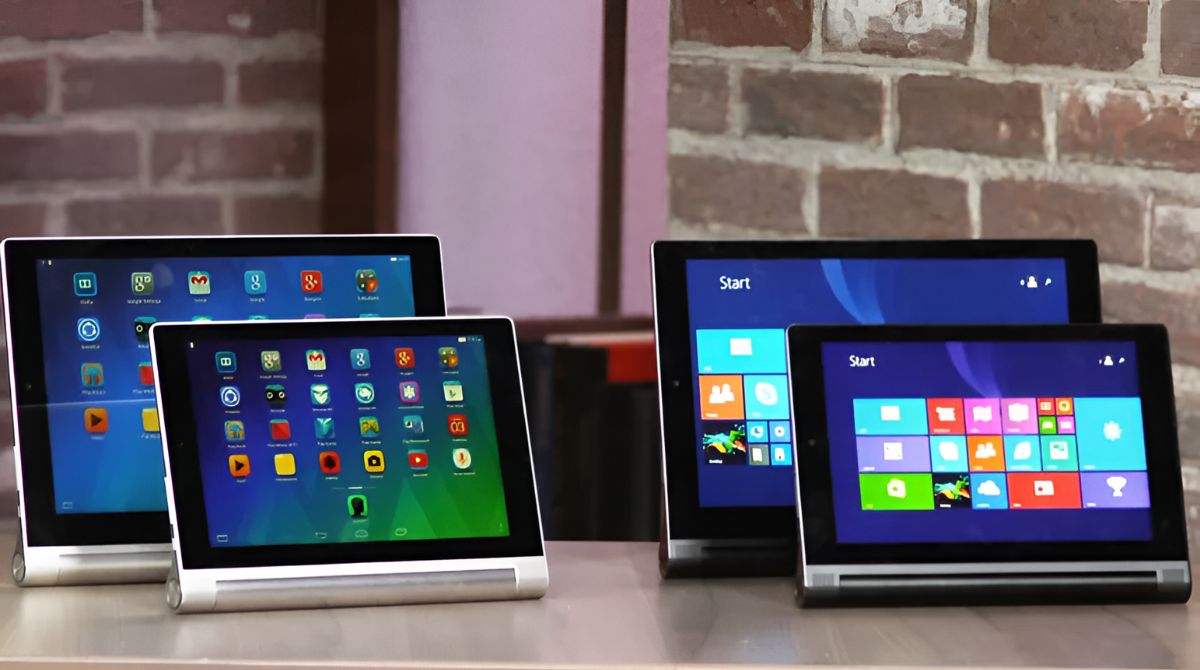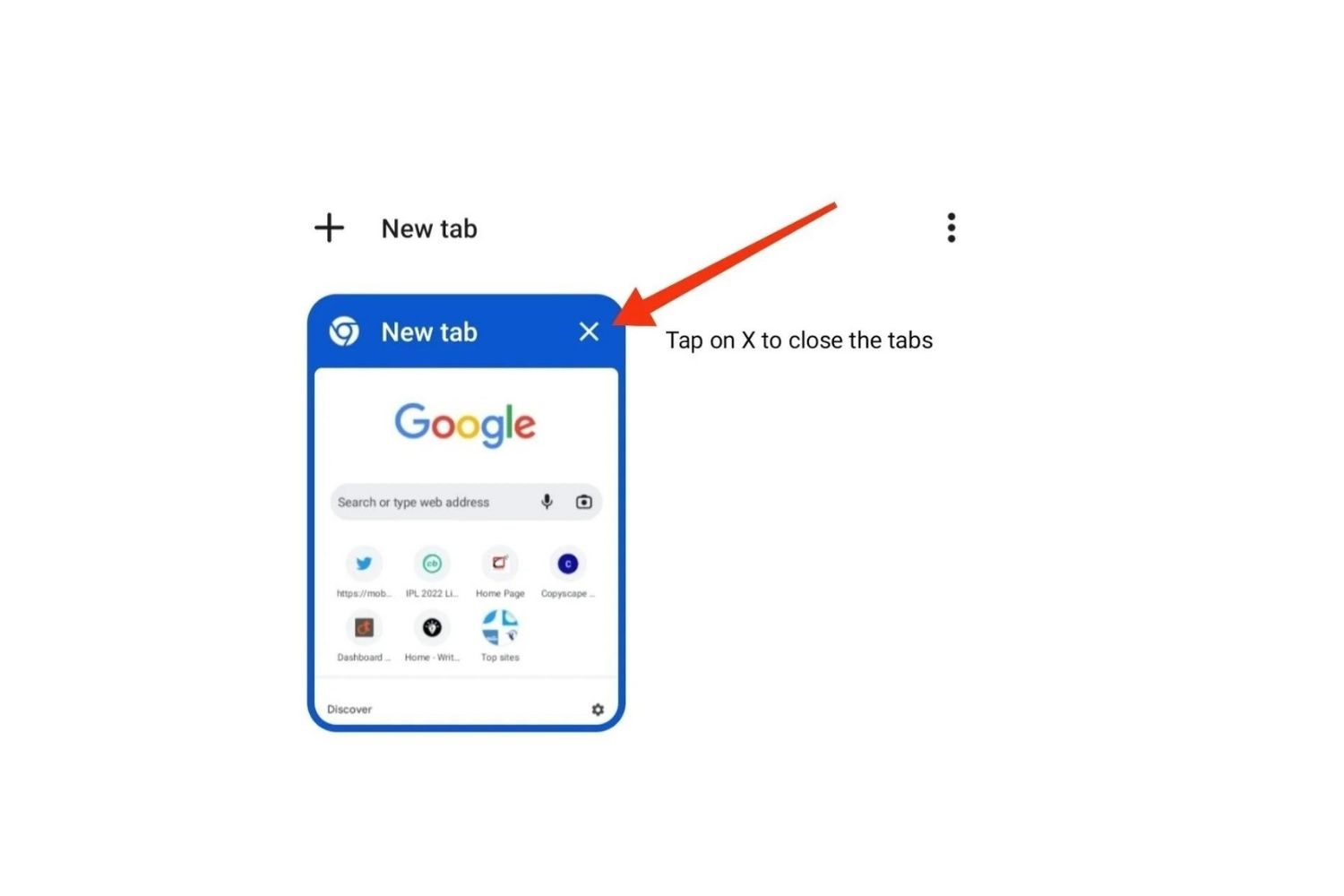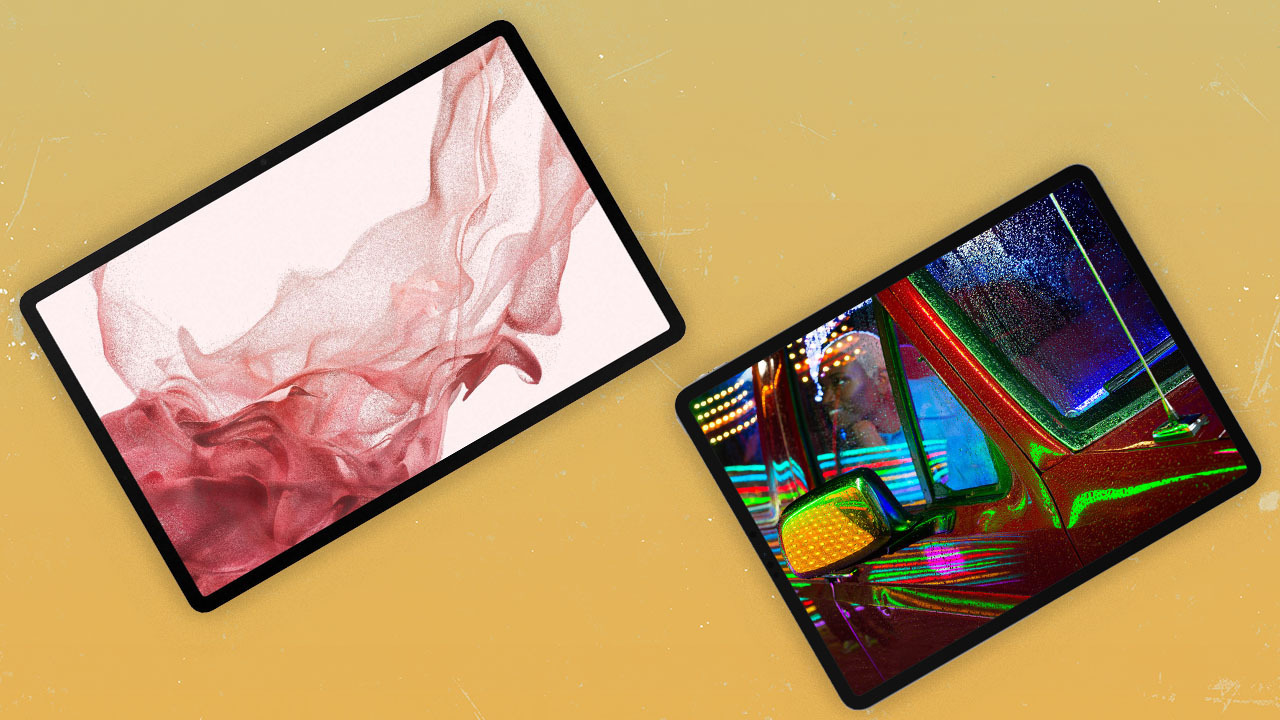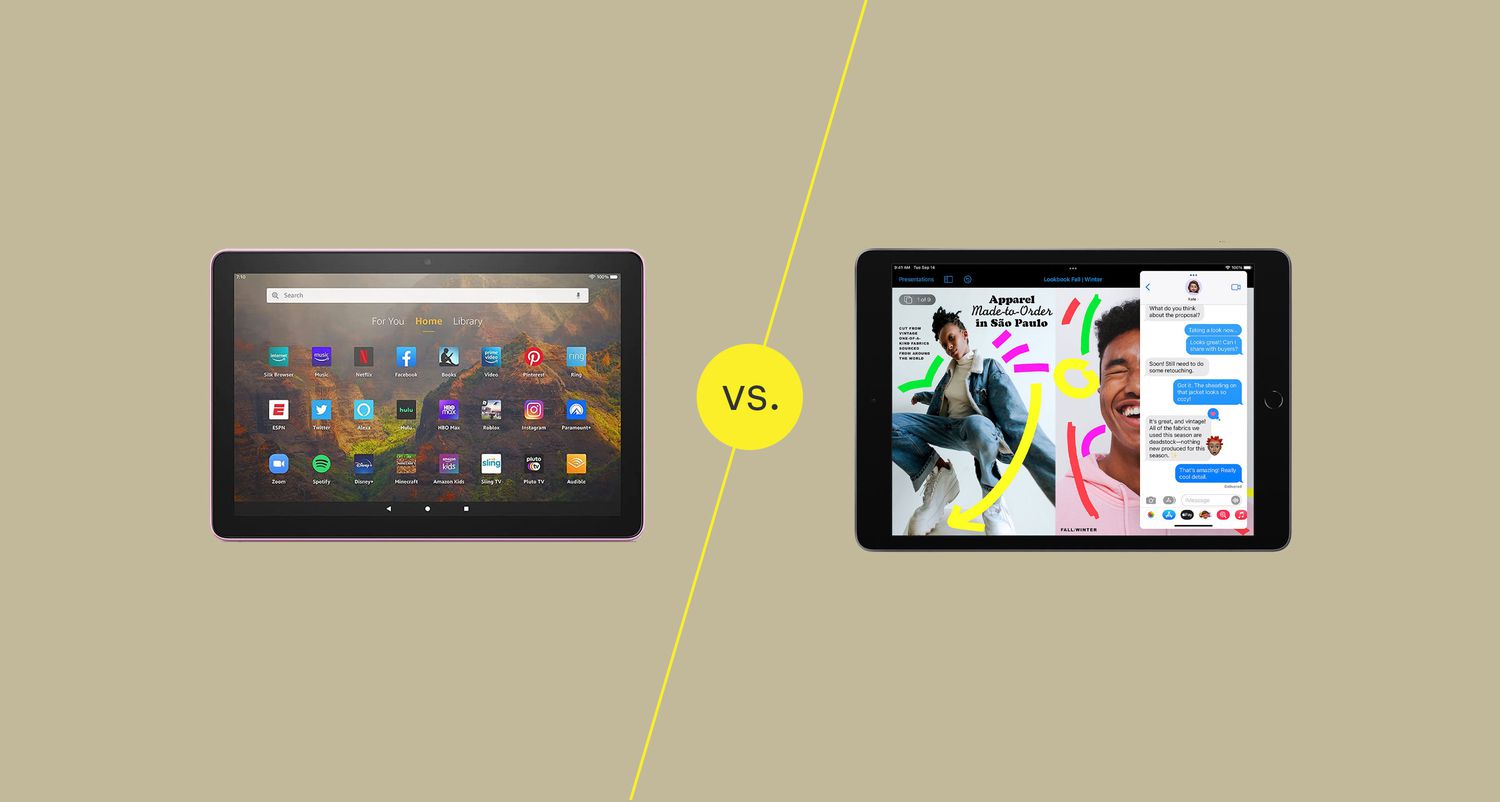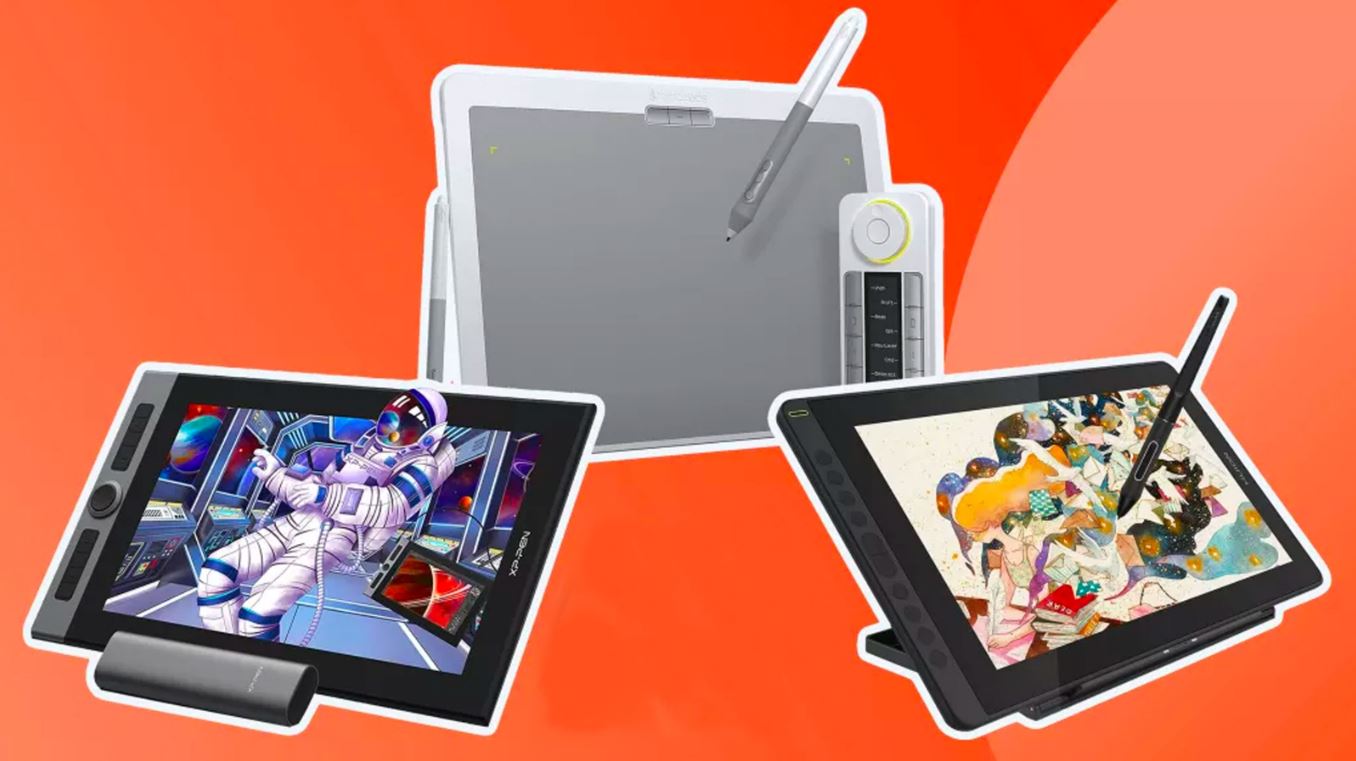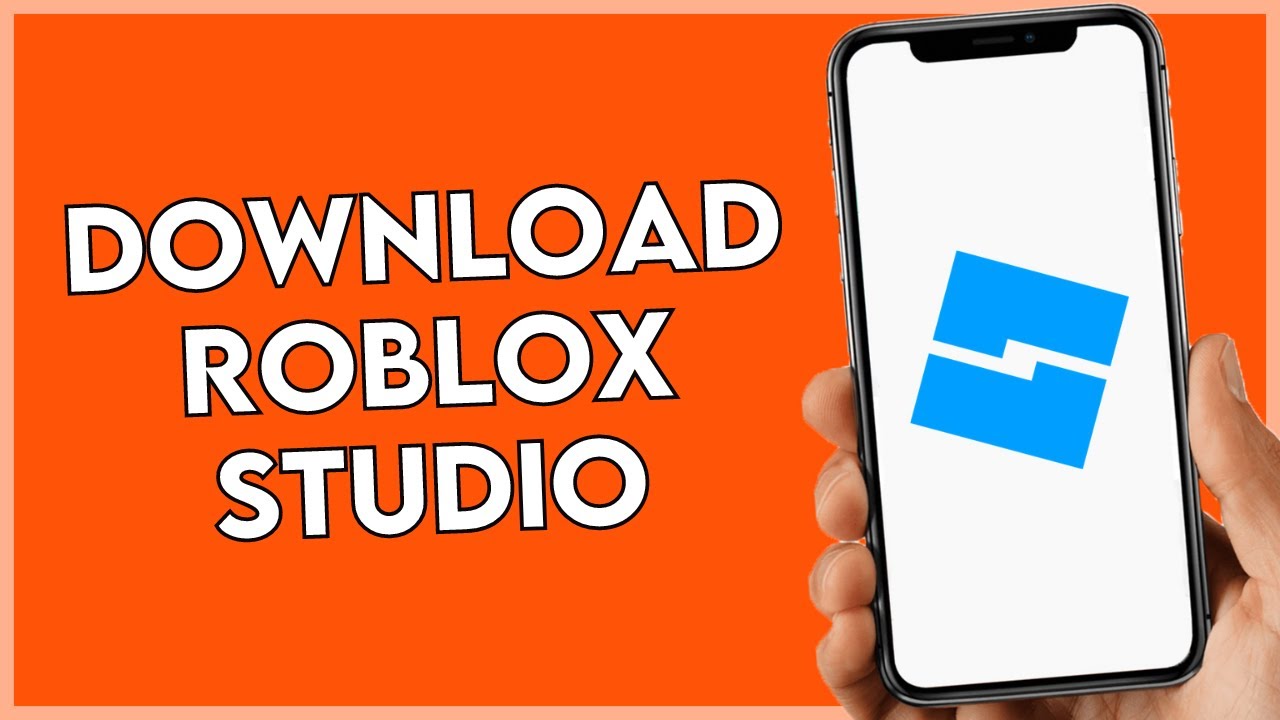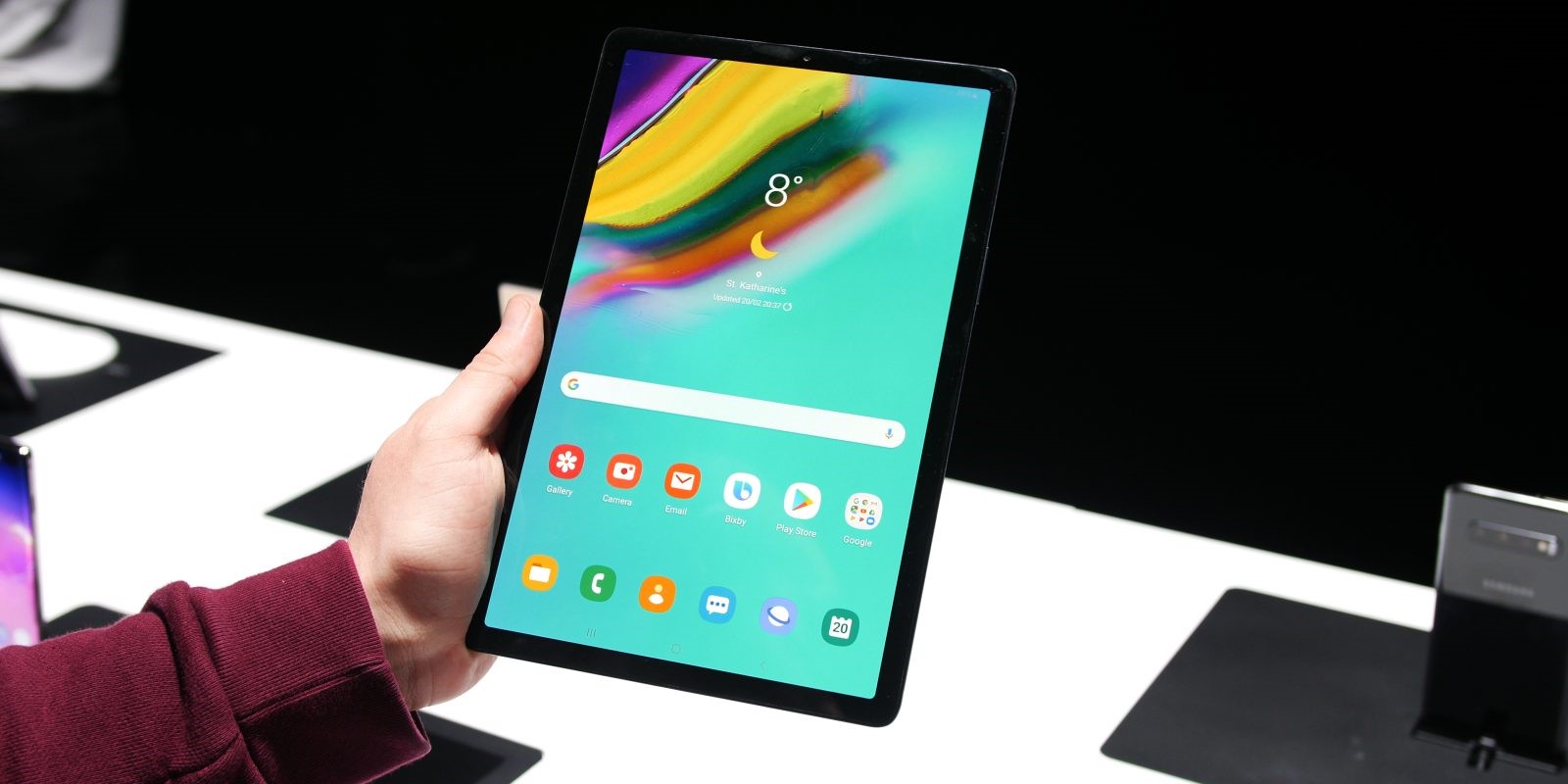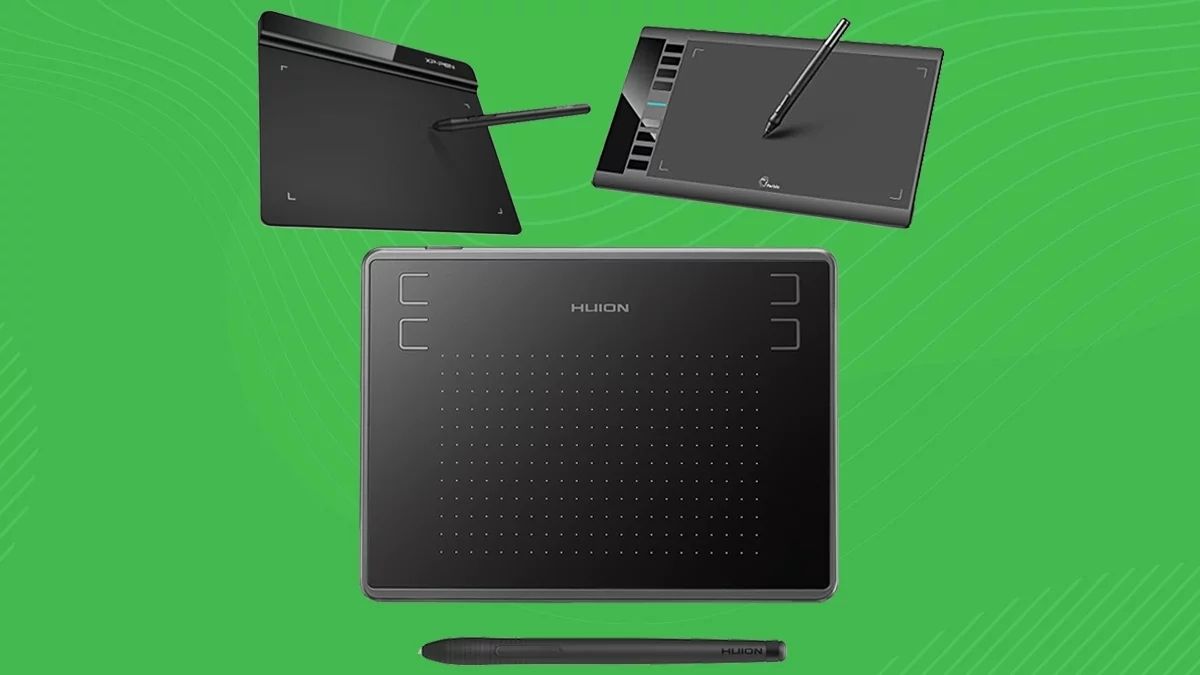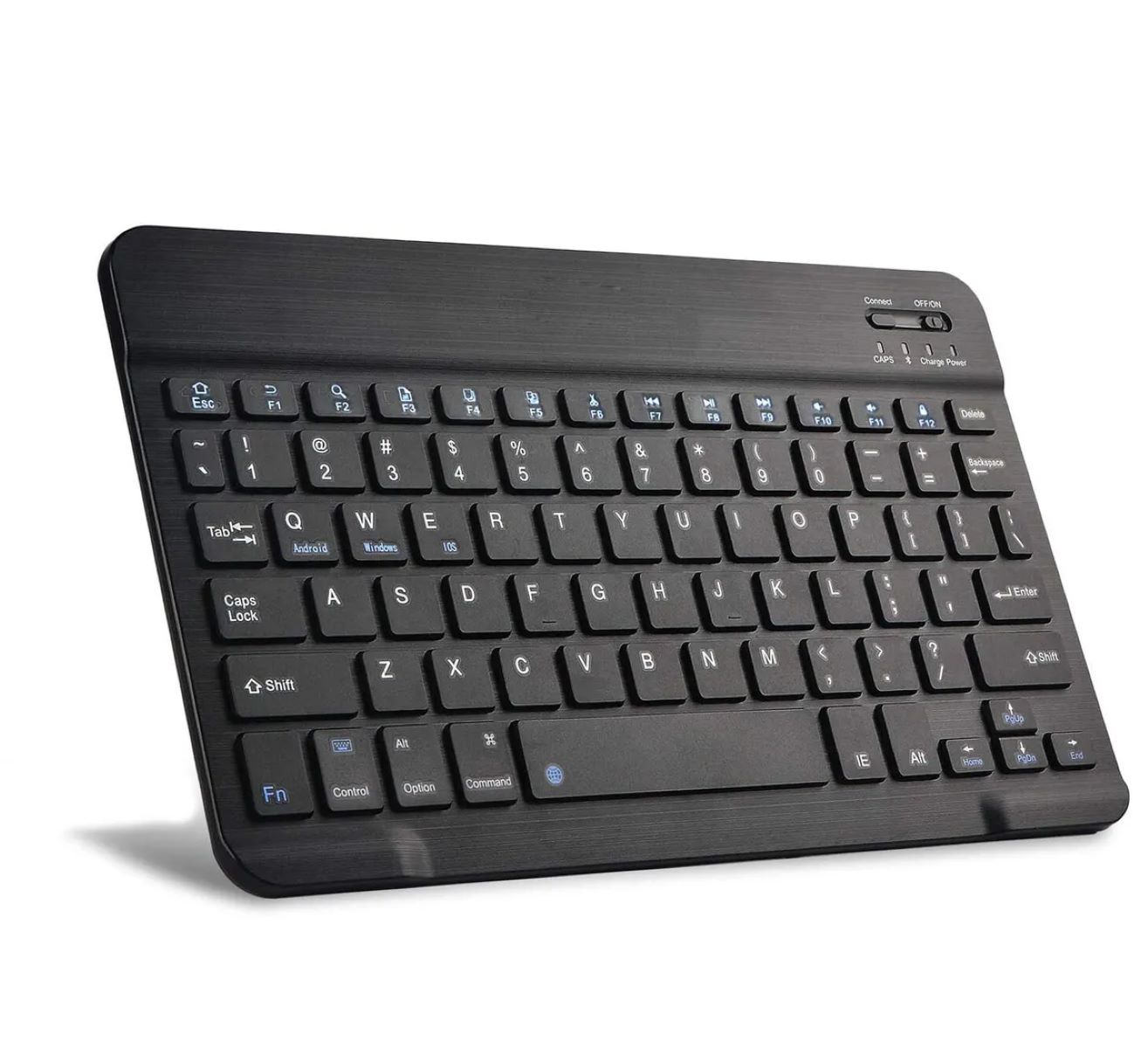Introduction
When it comes to choosing a tablet, two popular options dominate the market: Android and Windows. Both operating systems have their own unique features and benefits, making the decision of which one to choose a somewhat challenging task. Whether you’re a tech enthusiast or an average consumer, understanding the differences between Android and Windows tablets is essential in order to make an informed decision that suits your needs.
Android, developed by Google, is known for its open-source nature and widespread usability. It provides a highly customizable interface that allows users to personalize their tablets according to their preferences. On the other hand, Windows, created by Microsoft, offers a versatile platform that seamlessly integrates with other Microsoft services and software. It boasts a user-friendly interface and a wide range of productivity features that make it an excellent choice for professionals and students alike.
In this article, we will explore the key factors that differentiate Android and Windows tablets. By examining their user interfaces, app availability, customization options, hardware capabilities, multitasking abilities, battery life, security features, and price ranges, we can gain a comprehensive understanding of which operating system offers the best overall experience.
User Interface
One of the first things to consider when choosing between an Android and a Windows tablet is the user interface. The user interface is what you interact with on a daily basis, so it’s important to choose one that feels intuitive and easy to navigate.
Android tablets offer a sleek and customizable interface. With its grid of app icons and app drawer, it’s easy to access your favorite apps and widgets. Android also provides a consistent design language called Material Design, which ensures a visually appealing and consistent experience across different devices. Additionally, Android allows for more personalization, with options to change wallpapers, add widgets to the home screen, and customize themes and layouts. This flexibility allows users to tailor the interface to their preferences and create a personalized tablet experience.
On the other hand, Windows tablets feature a familiar desktop-like interface. The Start menu, with its live tiles, provides quick access to apps, files, and settings. With the recent Windows 11 update, the interface has become even more streamlined and modern, with centered taskbar icons and smoother transitions. Windows tablets also benefit from seamless integration with other Microsoft services and software, such as Office 365 and OneDrive. This makes it a great choice for users who rely heavily on Microsoft products for work and productivity purposes.
Overall, both Android and Windows tablets offer intuitive user interfaces. Android provides a customizable and visually appealing interface with a wide range of personalization options. Windows, on the other hand, offers a more desktop-like experience and seamless integration with Microsoft services. Ultimately, the choice between the two will depend on your personal preferences and the specific tasks you plan to perform on your tablet.
App Availability
When it comes to app availability, both Android and Windows tablets offer a vast selection. However, there are some differences in terms of the app ecosystems and the availability of specific apps.
Android has the advantage of the Google Play Store, which is home to a plethora of apps across various categories. From popular social media applications to entertainment, productivity, and gaming apps, you’ll find a wide range of options to choose from. Android’s open-source nature also allows for third-party app stores, further expanding the app selection. Moreover, many developers prioritize releasing their apps on Android first, due to its larger user base and popularity.
On the other hand, Windows tablets have their own app store called the Microsoft Store. While it may not have as many apps as the Google Play Store, the Microsoft Store still offers a decent selection of applications, particularly for productivity and professional use. Microsoft’s suite of Office applications, for instance, is well-developed and widely used on Windows devices. Windows tablets also have the advantage of running full desktop applications, which can give them an edge in terms of compatibility and versatility.
However, it’s worth noting that some popular apps and games may be more readily available on Android than on Windows. Additionally, the app experience on Android tablets tends to be more optimized and tailored for touchscreens, as opposed to Windows tablets that may require a mouse and keyboard for full functionality.
In summary, both Android and Windows tablets offer a wide range of apps, but the specific apps available may differ. Android has a larger app ecosystem, with a greater emphasis on entertainment and gaming, while Windows tablets focus more on productivity and professional applications. Consider your specific app needs and preferences when deciding between the two operating systems for app availability.
Customization Options
Customizability is an important aspect to consider when choosing between Android and Windows tablets. While both operating systems offer some level of customization, there are differences in the extent and flexibility of customization options.
Android tablets are well-known for their extensive customization capabilities. With Android’s open-source nature, users have the freedom to personalize their tablets to a great extent. You can change the launcher, install custom themes, customize the home screen layout, and even install third-party apps to modify the overall look and feel of your tablet. Additionally, Android offers a wide range of widgets that can be placed on the home screen, providing quick access to information and enhancing the overall user experience.
On the other hand, Windows tablets have a more limited level of customization compared to Android. While you can still customize the wallpaper, choose a preferred color scheme, and rearrange the live tiles on the Start menu, the options are relatively fewer. Windows tablets prioritize a consistent and streamlined user experience, which may limit the extent of customization options available to users. However, Windows does offer the ability to personalize the desktop background, taskbar settings, and system-wide color schemes to some degree.
It’s important to note that customization options on Windows tablets are more focused on personalizing the overall user interface and visual elements. On the other hand, Android tablets allow for deeper customization, including the ability to tweak system settings, use custom ROMs, and install various launchers to completely change the look and behavior of the device.
In summary, Android tablets provide a higher degree of customization options compared to Windows tablets. If you enjoy personalizing every aspect of your tablet’s interface and want complete control over its look and feel, Android is the way to go. However, if you prefer a more standardized and streamlined experience, with limited customization options, Windows may be the better choice.
Hardware
When it comes to hardware, both Android and Windows tablets offer a wide range of options to suit various needs and budgets. From processor power and RAM to storage capacity and display quality, the hardware specifications of a tablet play a crucial role in determining its performance and user experience.
Android tablets come in a variety of hardware configurations, ranging from budget-friendly options to premium devices. The market is filled with numerous manufacturers offering different specifications and designs. This enables users to choose a tablet that meets their specific requirements and budget. Android tablets often feature a range of processors from different manufacturers, such as Qualcomm, MediaTek, and Samsung’s Exynos, providing options for varying levels of performance.
Windows tablets, on the other hand, predominantly come from a few major manufacturers, such as Microsoft and Lenovo. These tablets are built to meet high-quality standards and are often equipped with powerful processors, ample RAM, and generous storage options. Since Windows tablets are designed to offer a desktop-like experience, they often come with hardware specifications that are more in line with traditional laptops. This makes them suitable for tasks that require more processing power, such as photo and video editing, running desktop software, and multitasking.
In terms of display quality, both Android and Windows tablets offer a range of options. From compact sizes to larger screens, users can choose the size that best suits their needs. Additionally, both operating systems offer tablets with high-resolution displays, ensuring crisp and vibrant visuals for media consumption and productivity tasks.
Ultimately, the hardware choice between Android and Windows tablets depends on your specific requirements and budget. Android tablets provide a wide range of options to cater to different needs and price points, making them suitable for casual users and those on a budget. On the other hand, Windows tablets tend to offer higher-end hardware specifications, making them better suited for professionals and power users who need a more robust computing experience.
Multitasking
Multitasking is an important aspect to consider when choosing between Android and Windows tablets, especially if you plan to use your tablet for productivity and multitasking purposes. Both operating systems offer multitasking capabilities, but there are some differences in the experience and functionality.
Android tablets provide a flexible multitasking experience, allowing users to run multiple apps simultaneously. With features like split-screen mode, you can have two apps side by side, making it easy to multitask and switch between them. Additionally, Android offers picture-in-picture mode, which allows certain apps, such as video players or video calls, to remain visible in a small window while you perform other tasks. This feature enhances productivity and enables you to stay connected while utilizing other applications.
Windows tablets, on the other hand, provide a more traditional desktop-like multitasking experience. With the ability to run full desktop applications, Windows tablets excel in multitasking scenarios. You can have multiple windows open at the same time, arrange them on the screen as you see fit, and easily switch between different applications. This makes Windows tablets a great choice for tasks that require heavy multitasking, such as working with multiple documents, running productivity software, or managing complex projects.
In addition to split-screen and window management capabilities, Windows tablets often come with advanced productivity features. They may have dedicated keyboards and trackpads or support stylus input, allowing for precise control and efficient multitasking. These features make Windows tablets a popular choice for professionals and students who require a versatile device for productivity and creativity.
Overall, both Android and Windows tablets offer multitasking capabilities, but the experience may differ. Android tablets provide a more app-centric and mobile-oriented multitasking approach, whereas Windows tablets deliver a desktop-like experience with a wide range of productivity features. Consider your specific multitasking needs and the types of apps you frequently use when making a decision between the two operating systems.
Battery Life
Battery life is a crucial factor to consider when choosing a tablet, especially if you plan to use it on the go or for extended periods without access to a power source. Both Android and Windows tablets vary in terms of battery life, and it’s important to understand their differences before making a decision.
Android tablets are known for their efficiency and optimization when it comes to battery life. Many Android tablets offer excellent battery performance, allowing you to use them for hours without needing to recharge. The battery life can vary depending on factors such as screen brightness, app usage, and background processes. However, with proper management and optimization, Android tablets can provide long-lasting battery life, making them suitable for casual use, multimedia consumption, and light productivity tasks.
Windows tablets, on the other hand, tend to have varying battery life depending on the hardware specifications and usage patterns. High-performance Windows tablets with powerful processors and high-resolution displays may drain the battery faster, especially when running resource-intensive tasks or using desktop applications. However, many Windows tablets are designed to be power-efficient and offer battery-saving modes to extend the longevity. Additionally, some Windows tablets have the advantage of utilizing low-power processors, similar to those found in laptops, which can significantly improve battery life.
It’s important to note that battery life can be influenced by individual usage patterns and preferences. Factors such as screen brightness, wireless connectivity, and the intensity of app usage can impact the overall battery performance of a tablet. It’s also worth considering that the battery life of a tablet may decrease over time as the battery ages.
When considering battery life, it’s recommended to review the specifications and user reviews of different tablets to get a sense of their real-world battery performance. Additionally, practicing good battery management habits, such as adjusting brightness levels, disabling unnecessary background processes, and using battery-saving modes when needed, can help extend the battery life of both Android and Windows tablets.
In summary, both Android and Windows tablets offer varying levels of battery life, influenced by factors such as hardware specifications, usage patterns, and optimization. Android tablets are generally known for their efficiency and can provide long-lasting battery life with proper management. Windows tablets offer varying battery life depending on the hardware and usage patterns, but many are designed to be power-efficient. Consider your usage requirements and habits when evaluating the battery life of different tablets.
Security
Security is a crucial aspect to consider when selecting a tablet, as it protects your personal data and ensures a safe browsing and computing experience. Both Android and Windows tablets have different security features and approaches to safeguarding your device and information.
Android tablets are known for their robust security measures. Google continuously releases security updates and patches to address any vulnerabilities and protect against potential threats. Additionally, Android tablets provide features such as app permissions, which allow you to control what personal data and device resources each app can access. Android also offers built-in security features like Google Play Protect, which scans and verifies apps for potential malware or malicious behavior.
Windows tablets, being part of the Windows ecosystem, benefit from the security features and infrastructure developed by Microsoft. Windows tablets receive regular security updates to ensure protection against emerging threats. Windows Defender, the built-in antivirus software, offers real-time protection against viruses, malware, and other malicious software. Additionally, Windows tablets benefit from features like secure boot, which ensures that the operating system and firmware have not been tampered with, and BitLocker, which provides full-disk encryption for added data security.
It’s important to note that the security of your tablet also depends on your own practices and habits. Being mindful of your online behavior, practicing safe browsing, and exercising caution when downloading apps or opening attachments can greatly enhance the overall security of your tablet, regardless of the operating system.
When it comes to security, both Android and Windows tablets offer solid protection with the necessary features to keep your device and data secure. Android tablets excel in terms of user control over app permissions, while Windows tablets benefit from the security infrastructure of the Windows ecosystem. Ultimately, it’s important to stay up to date with security updates and practice good online habits to ensure the security of your tablet, regardless of the operating system.
Price Range
Price is a significant factor to consider when purchasing a tablet, as it determines the affordability and value for your money. Both Android and Windows tablets come in a wide range of price points, catering to different budgets and needs.
Android tablets offer a diverse selection of options across various price ranges. From budget-friendly tablets to high-end flagship models, there is a wide variety to choose from. Budget Android tablets provide basic functionality and are suitable for casual use, such as browsing the web, checking emails, and streaming media. As you move up the price range, you’ll find tablets with better hardware specifications, higher-resolution displays, and additional features. High-end Android tablets often come with premium materials, powerful processors, and advanced features like stylus support or high-quality cameras.
Windows tablets generally span a higher price range compared to Android tablets. This is due to the inclusion of more powerful hardware and the added versatility of running full desktop applications. Windows tablets are designed to provide a laptop-like experience and are often equipped with high-resolution displays, faster processors, and larger storage capacities. These tablets are well-suited for professionals, students, and power users who require extensive multitasking capabilities and the ability to run resource-intensive applications.
It’s worth noting that prices may vary depending on factors such as brand, hardware specifications, and storage capacity. Additionally, promotions and discounts may be available at different times, allowing you to find deals within your preferred price range.
When considering price, it’s prudent to evaluate your specific needs and budget. Android tablets provide a wide range of options, making them accessible to a broader audience with varying budget constraints. On the other hand, Windows tablets may be more suitable for users who require a higher level of performance and the ability to run full desktop applications, but these often come with a higher price tag.
In summary, both Android and Windows tablets offer a range of prices to suit different budgets and needs. Android tablets provide a wider range of options across various price points, while Windows tablets tend to span a higher price range due to their advanced hardware and capabilities. Consider your required specifications, the intended use of the tablet, and your budget constraints when making a purchasing decision.
Conclusion
Choosing between an Android or Windows tablet ultimately depends on your specific needs, preferences, and budget. Both operating systems offer unique features and advantages that cater to different users and use cases. To summarize the key points discussed in this article:
- Android tablets provide a highly customizable user interface, a vast selection of apps, and a wide range of hardware options. They excel in personalization and offer a more app-centric multitasking experience.
- Windows tablets offer a familiar desktop-like interface, seamless integration with Microsoft services, and the ability to run full desktop applications. They are known for their productivity features, multitasking capabilities, and power-efficient hardware.
- When it comes to app availability, Android has a larger app ecosystem with a wide variety of categories, while Windows focuses more on productivity and professional applications.
- Android tablets provide extensive customization options, allowing users to personalize their tablets to a great extent. Windows tablets have more limited customization options but offer a streamlined experience with a focus on desktop personalization.
- In terms of hardware, Android offers a wide range of options across various price points, while Windows tablets generally have higher-end hardware configurations and are suitable for more demanding tasks.
- Battery life varies depending on factors such as usage patterns and hardware. Android tablets are known for their efficiency and optimization, while Windows tablets offer varying battery life depending on the device’s specifications.
- Both Android and Windows tablets prioritize security, with regular updates and features to protect against threats. Android emphasizes user control over app permissions, while Windows benefits from the security infrastructure of the Windows ecosystem.
- Finally, price range is an important consideration, with Android tablets offering a wide variety of options across different price points, and Windows tablets generally spanning a higher price range due to their advanced hardware and capabilities.
Ultimately, the choice between Android and Windows tablets depends on your specific needs, preferences, and budget. Consider the factors that are most important to you, such as user interface, app availability, customization options, hardware requirements, multitasking abilities, battery life, security features, and price range. By carefully evaluating each aspect, you can make an informed decision that aligns with your unique requirements and provides the best overall tablet experience for you.







